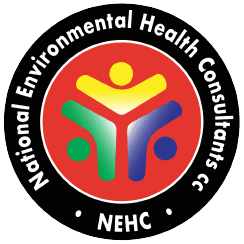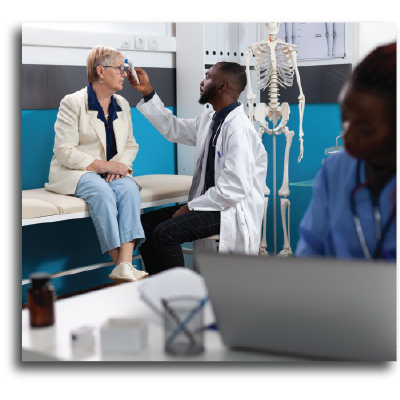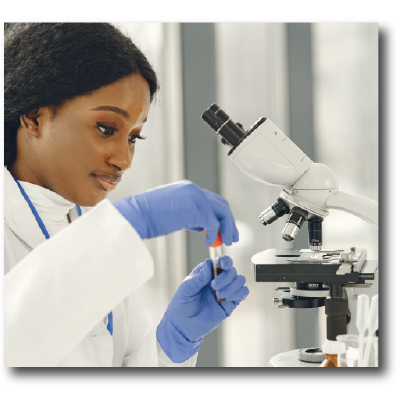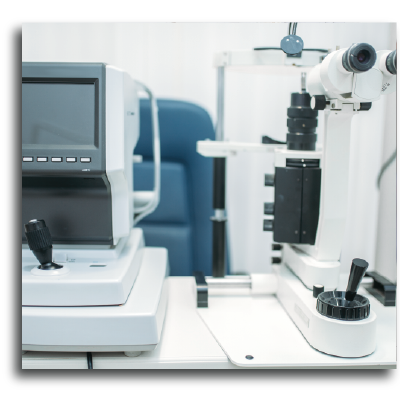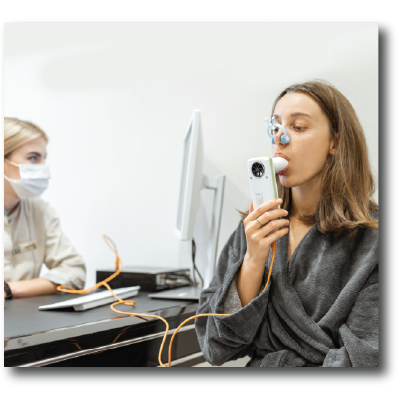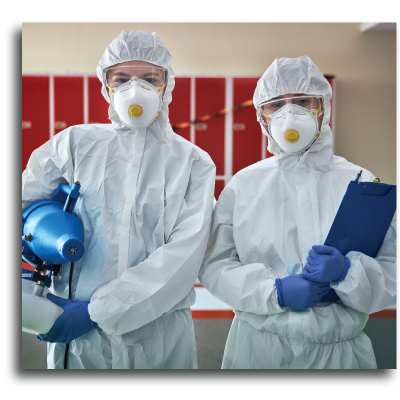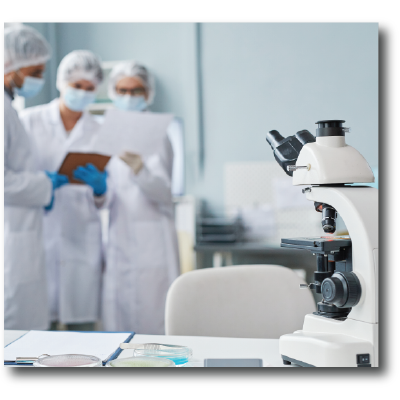Audiometric Tests
An audiometry exam tests your ability to hear sounds. Sounds vary based on their loudness (intensity) and the speed of sound wave vibrations (tone). Hearing occurs when sound waves stimulates the nerves of the inner ear. Eventually the sound travels along nerve pathways to the brain. Sound waves can travel to the inner ear through the ear canal, eardrum, and bones of the middle ear (air conduction), or through the bones around and behind the ear (bone conduction).
The INTENSITY of sound is measured in decibels (dB):
- A whisper is about 20 dB
- Loud music (some concerts) is around 80 – 120 dB
- A jet engine is about 140 – 180 dB
Sounds greater than 85 dB can cause hearing loss after a few hours. Louder sounds can cause immediate pain, and hearing loss can develop in a very short time.
The TONE of sound is measured in cycles per second (cps) or Hertz:
- Low bass tones range around 50 – 60 Hz
- Shrill, high-pitched tones range around 10,000 Hz or higher
The normal range of human hearing is about 20 Hz – 20,000 Hz. Some animals can hear up to 50,000 Hz. Human speech is usually 500 – 3,000 Hz
Baseline Medicals
The employee should receive a baseline or initial medical examination based on an activity hazard assessment prior to being assigned to a hazardous or potentially hazardous activity (e.g., exposure to toxic substances or radiological materials, repetitive motion, heat/cold stress).
The minimum requirements for a baseline medical (depending on the exposures of the job at hand):
- Complete medical and work history.
- Physical examinations.
- Pulmonary function test.
- Eye examination.
- EKG
- Audiogram
- Urinalysis
- Blood Chemistry.
- Heavy metal screen.
- Radiological bioassay.
Evaluation of stresses related to repetitive motion.
Biological Risk Assessments
These assessments are done on biological agents concentrating on identifying hazards, assessing the risks of these hazards and controlling these risks.
Biological agents are everywhere some are beneficial to life and some are harmful. Workers and employers do not know the risks associated to exposure to biological agents. We are there to do the assessments and classify these biological agents into four groups:
Group 1
Unlikely to cause human disease;
Group 2
Can cause human disease and might be a hazard to workers; unlikely to spread to the community; there is usually effective prophylaxis or treatment available;
Group 3
Can cause severe human disease and present a serious hazard to workers; it may present a risk of spreading to the community, but there is usually effective prophylaxis or treatment available;
Group 4
Causes severe human disease and is a serious hazard to workers; it may present a high risk of spreading to the community; there is usually no effective prophylaxis or treatment available.
Biological agents can infect the body through different sources:
Infection at the workplace can occur via different sources such as (Advisory committee on Dangerous Pathogens, 2003):
- blood and other body fluids;
- human bodies, animal carcasses and raw meat;
- human or animal waste products such as faeces and urine;
- respiratory discharges such as coughs and sneezes;
- skin contact.
Allergic and toxic reactions can occur via:
- moulds or mould spores;
- dust mites, feathers, animal hairs, pollen.
One can control the exposure to biological agents through basic personal hygiene and wearing personal protective equipment (PPE).
Driver Vision Screening
To screen your vision, you will be asked to look into a machine and read lines of letters or numbers to the representative. This screening determines whether your eyesight and peripheral vision meet standards to safely operate a motor vehicle. It is not a medical exam. If you fail the vision screening, you may be asked to see an eye care professional. If you need to wear glasses or contact lenses to pass the vision screening, you must wear them when you drive. Your license will show this restriction.
Lung Function Tests
Pulmonary function tests are a group of tests that measure how well the lungs take in and release air and how well they move gases such as oxygen from the atmosphere into the body’s circulation.
Pulmonary function tests are done to:
- Diagnose certain types of lung disease (such as asthma, bronchitis, and emphysema)
- Find the cause of shortness of breath
- Measure whether exposure to chemicals at work affects lung function
- Check lung function before someone has surgery
It also can be done to:
- Assess the effect of medication
- Measure progress in disease treatment
Occupational Health Risk Assessments
The risk assessment is a systematic approach of identifying the Occupational Hygiene Risks, generated/accompanied by the process and prioritization of these risks.
The assessments are based on a holistic approach with all the interrelating factors which contribute to the occurrence of occupational disease being considered. The key is to identify the risk and not just the hazard associated with the process
Most substances are inherently hazardous; however, it is the actual circumstances of the use that will determine the risk of that substance. The risk will depend on the hazard potential of the stress / substance e/g/ how is it used, how is it controlled, the exposure and duration (how much and for how long).
Worker Health Surveillance Programmes
NEHC has medical doctors with special training and experience in occupational health that can design appropriate health surveillance programs for the client as well as assist in the implementation thereof.
The concept of workplace health surveillance is new to occupational health and is frequently confused with medical screening. Health screening refers to the early detection and treatment of diseases associated with particular occupations, while workplace health surveillance refers to the removal of the causative factors.
NIOSH defines occupational health surveillance as “the tracking of occupational injuries, illnesses, hazards, and exposures.” The Joint ILO/WHO Committee on Occupational Health at its 12th Session in 1995 defined an occupational health surveillance system as “a system which includes a functional capacity for data collection, analysis and dissemination linked to occupational health programmes”.
